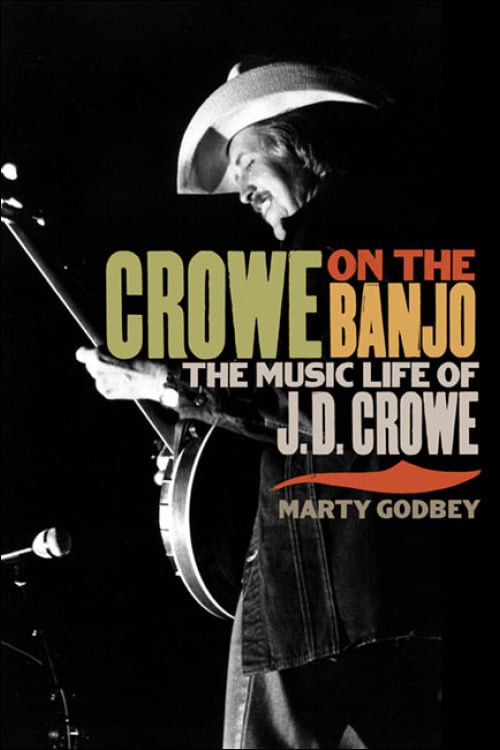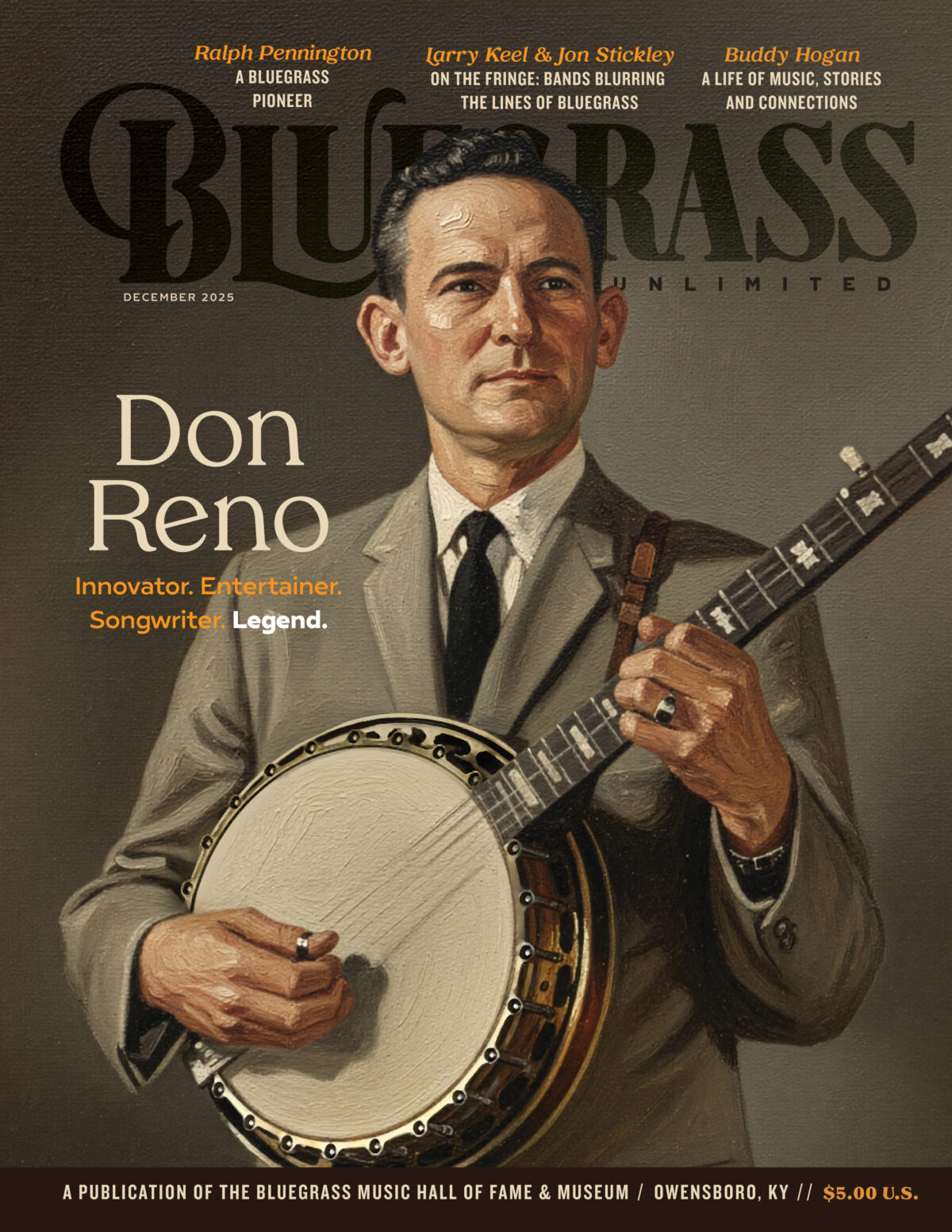Crowe On The Banjo: The Music Life Of J.D. Crowe – By Marty Godbey
 CROWE ON THE BANJO:
CROWE ON THE BANJO:
THE MUSIC LIFE OF J.D. CROWE
BY MARTY GODBEY
University of Illinois Press
978-00252-07825-5
The publication of this book by the respected University of Illinois Press as part of their Music In American Life series is a major event for three reasons: 1.) It’s a captivating and comprehensive biography of a bluegrass artist who has had—and still has—a profound influence on the music 2.) It’s a wide-angle look at the second generation of bluegrass artists 3.) It’s the magnum opus of Marty Godbey, a much-loved and highly-respected writer who unexpectedly passed away in December 2010.
Godbey interviewed Crowe and many of his contemporaries and bandmembers at length over several years. She first heard him live in 1968 with her husband, Frank Godbey (who also lovingly shepherded this book to publication after Marty’s passing), and interviewed Crowe many times between 1976 and 2010. He participated willingly and openly and said to Godbey before starting, “If we’re going to do this thing, we need to do it right.” It tells in the honesty, detail, and confidence of the prose.
What brings out the complexity of the man is how Godbey puts Crowe into the context of his generation—the interplay of musicians joining and leaving bands at a time when the music itself was changing rapidly with every new configuration. Especially interesting is Crowe’s years with Jimmy Martin, whom Crowe describes as a great teacher. Undoubtedly, Crowe was also a great student and carried on those lessons of timing, hard work, and professionalism into his own bands, the Kentucky Mountain Boys and then the New South.
This book should also revive interest in the Larry Rice/Bobby Slone/Doyle Lawson and J.D. Crowe band that set the stage for the great 1975 New South of Slone, Tony Rice, Ricky Skaggs, and Jerry Douglas immortalized on Rounder 0044. And Godbey is eloquent in describing the venues around Lexington, Ky., (Martin’s, the Holiday Inn, the Sheraton) and the atmosphere of the times.
Crowe’s banjo playing has been recognized and awarded, but what is intriguing here is just how great a bandleader he was and is—guiding, and furthering the careers of so many bluegrass artists, and adjusting and developing his sound through all the changes. Once he started his own band, Crowe put as much work into being a good bandleader as he did in learning Scruggs licks as a boy.
Godbey does not assume in her readers a knowledge of bluegrass, but nor does she over-simplify the music and the personalities. In fact, she’s at her best in describing the sound and impact of Earl Scruggs on Crowe and that whole generation coming to it by seeing live performances and listening to the radio. Today, we sometimes assume that everyone after Earl picked like Earl, but consider the wide diversity of styles in that second generation of Crowe, Sonny Osborne, Don Reno, Eddie Adcock, and others. They had no tablature to work from and brought themselves to the sound, transforming it into their own styles.
Finally, reading this book is a chance for those of us who knew Marty to spend some time with her voice again. Her directness graces this book, as her grace directed it. I’ll come back to this book again and again, not only to get a subtle, nuanced look at a great artist and his time, but to hear Marty again, reminding us by example that great writing about bluegrass can be as thrilling as the music itself. (University Of Ill. Press, 11030 S. Langley Ave., Chicago, IL 60628, www.press.uillinois.edu.) CVS
